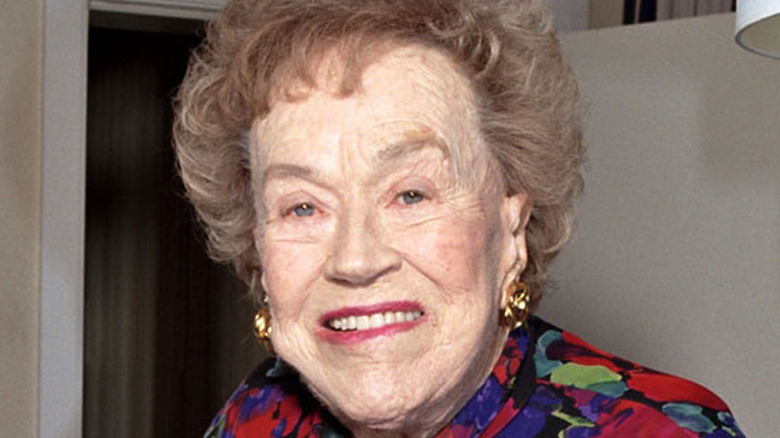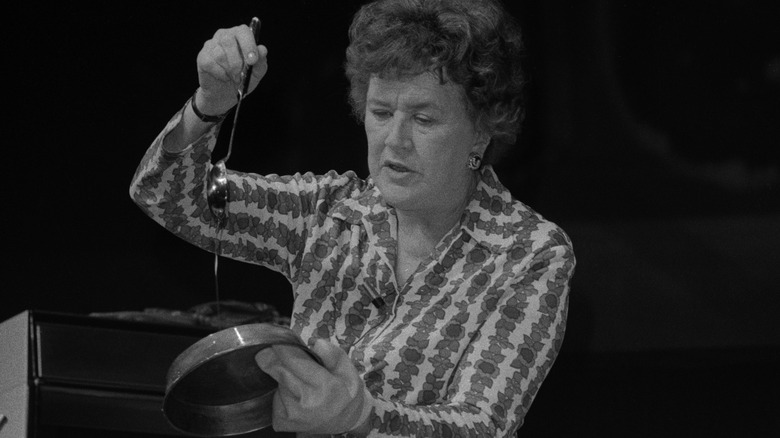What Made Julia Child's Cooking So Exciting To Americans
For people who grew up with a myriad of cooking shows, celebrity chefs, and viral recipe videos at their fingertips, it's hard to grasp just how exciting and inspiring it was in 1963 when Julia Child first appeared on public television. There had never been anything like her show "The French Chef" before — that alone made it novel. American cooking at the time was a far cry from the beautiful French food that Child shared, and it turns out that home cooks were eager for the change.
In the new documentary "Julia," former Bon Appétit editor Barbara Fairchild shares that before Child's cookbook "Mastering The Art Of French Cooking" and her television series "The French Chef," cuisine in the U.S. was all about convenience. As The National Women's History Museum notes, boxed and canned foods became increasingly popular in the '40s and '50s. Convenience foods were heavily marketed to housewives, promising them all the nutrition of fresh food without all the time-consuming cooking.
While processed foods may have given families more free time, they created an unappealing landscape of dishes like TV dinners, canned soup sauces, and the strange, jiggly world of Jell-O salads. "It might have chopped carrots with marshmallows in them," says Child's friend Pat Pratt in the film. "It was pretty awful." As former WBGH producer Russ Morash says in the film, "We ate without much style, flair, and imagination."
It wasn't just the food
In the documentary, Julia Child says that she "seemed to be the right woman at the right time." Child's goal with "The French Chef" was to help people make beautiful food. But more importantly, she says in the film, "My point is to make cooking easy for people so that they can enjoy it and do it."
Viewers were excited to learn French recipes like the boeuf bourguignon featured on the first episode of the show, and Child enjoyed teaching home cooks classic French techniques. With other chefs these may have seemed intimidating, but Child's feeling was that "you must be a fearless cook." She herself was not afraid to make mistakes on her show, whether it was dropping food on the floor or watching a molded dish fall apart. The technical limitations of the show meant Child could not pause or re-record, which allowed audiences to see how she rolled with her mistakes.
Child also loved to put viewers at ease with theatrics and humor, like making a raw chicken wave hello or threatening to court-martial anyone who sunk her soufflé. "Educational television has to be entertaining," she says. "We made it fun because I was having a good time." And audiences were, too. "Whether you cooked or didn't cook, people would just watch her for fun," chef Sara Moulton says in the film.

